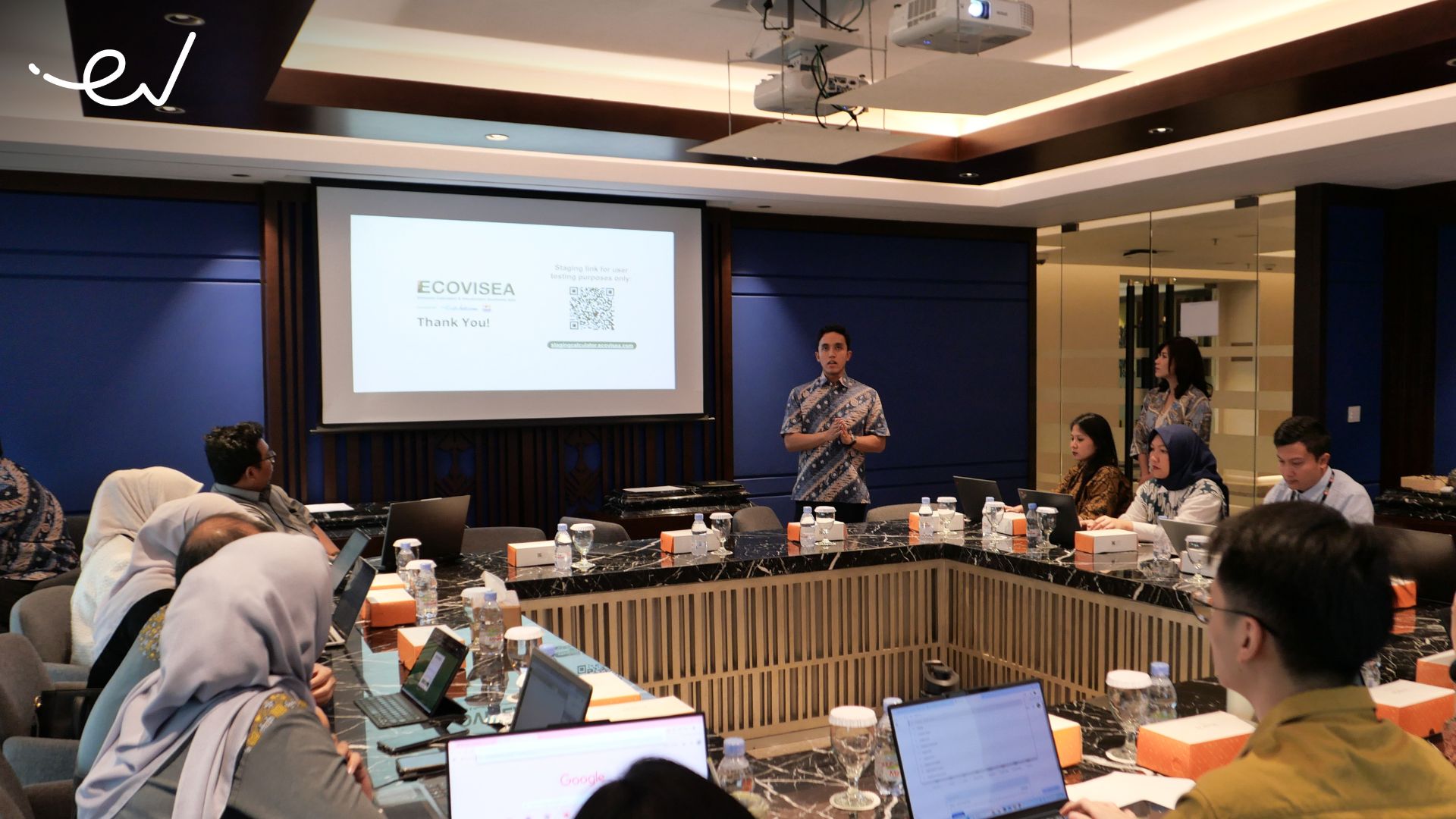Let’s start with the basics: What are scope 1, 2, and 3 emissions?
In today’s landscape, the Environmental, Social, and Governance (ESG) factor is no longer a “nice-to-have” or additional perk in your business. Rather, it has become a necessity—a fundamental factor embedded in your operations, strategies, and management to ensure the company’s longevity. One of them is to measure the company’s carbon footprint.
Businesses are increasingly under pressure from investors, customers, and regulators to report their entire carbon footprint, which is the total sum of all greenhouse gas (GHG) emissions, regardless of industry. Yet, many are still unsure about where to start, when to start, or how to start.
GHG emissions are divided into three scopes—or consumption factor:
- Scope 1 is the direct GHG emissions controlled by a company. For example: fuel consumption (coal, diesel, etc), type of refrigerant (CFC, HFC, etc), and amount of consumption or use.
- Scope 2 is indirect emissions associated with the energy consumption acquired and consumed by the company. For example: electricity consumption (grid location and amount of consumption).
- Scope 3 is GHG emissions that a company can influence but does not control. For example: purchased goods & services and capital goods (category of purchased goods and cost of procurement).
A deeper dive: What are scope 3 emissions?
Scope 3 emissions are the result of activities from assets not owned or controlled by the reporting organization, but that the organization indirectly affects in its value chain. For example, emissions generated from a value chain’s transportation and distribution, waste generated in production, use of sold products, and more.
These emissions account for 75% of a company’s overall emissions, on average, according to an MIT report, which may pose the biggest challenge for companies.
Scope 3 emissions reflect those that are not directly produced or resulting from the company’s own activities but from the upstream and downstream parts of its value chain. The source of these emissions would vary for each business, but in most cases, scope 3 represents the emissions from suppliers and raw materials.
This becomes particularly crucial for businesses that operate as suppliers or provide material sources, such as those in the agriculture, mining, chemicals, construction materials, and manufacturing sectors.
At any time of the day, your emissions might be part of your value chain’s responsibility to be reported as their scope 3 emissions. One thing to note is that your scope 1 and 2 emissions would be your value chain’s scope 3 emissions.
Scope 3 reporting: Can it wait amid the global push for sustainability standards?
When it comes to reporting requirements, each country and region has been pushing at a different pace on the obligation of scope 3 disclosure.
The European Union, for example, under its Corporate Sustainability Reporting Directive (CSRD), has required large companies and publicly listed firms to include disclosure of their emissions since 2024.
Another country, like Japan, as an example, has started encouraging companies to include scope 3 emissions in their emissions reporting, even though it has not been universally mandated.
Several companies around the world have also taken the extra mile by voluntarily reporting their scope 3 emissions, which aligns closely with international sustainability frameworks, such as the Task Force on Climate-Related Financial Disclosures (TCFD), Carbon Disclosure Project (CDP), and the Science-Based Targets initiative (SBTi).
From Indonesia’s perspective, the corporate sustainability landscape has primarily centered on tracking emissions up to scope 1 and 2. However, a more comprehensive approach is becoming increasingly crucial for businesses with global aspirations.
Companies looking to attract capital from international investors often find that reporting on all three emissions scopes is a key expectation. For many of these investors, a complete scope 1, 2, and 3 emissions profile is a fundamental part of their due diligence and investment criteria.
This signals a broader movement within Indonesia towards adopting more holistic sustainability reporting to align with global standards and enhance its global competitiveness.
This direction is also led by multinational companies headquartered in regions where scope 3 disclosures have been strongly obligated, promoting the initiation of emissions reporting within Indonesia.
What needs to be collected?
When calculating a scope 3 emission, the data points would cover primary and secondary data. Your activities would be included as primary data as part of its value chain.
For example, when calculating under the category of “Upstream Transportation and Distribution,” energy usage or emissions data from third-party transportation and distribution suppliers would be required as a data point. If you are an industry that provides this service, your emissions would need to be tracked to fulfill the data points.
Therefore, to prepare for this data exchange, it is important to have a comprehensive understanding of your own scope 1 and 2 data collection.
For scope 1, this means tracking the consumption of all fuels used on-site, including gasoline for company vehicles, natural gas for boilers, and refrigerant leaks. Meanwhile, for scope 2, the data is collected by tracking electricity, steam, heating, and cooling consumption through utility bills.
This data, which is already within your operational control, is the primary information that will be requested to calculate your customer’s “Purchased Goods and Services” category within their own scope 3 reports.
In terms of mechanism, your customers might send you a survey or questionnaire requesting your scope 1 and 2 emissions data. They might ask for this data to be allocated to the specific products or services they purchase from you.
Having your company ready to collect and organize its emissions data would not only help meet reporting obligations but also position your company as a reliable partner that is ready to provide the essential information needed to help them meet their sustainability goals.
Companies would first assess the specific risks across their entire value chain to address the risks climate change could bring to their operations.
There is growing awareness that these disruptions extend beyond a company’s direct operations. Hence, when identifying such hotspots within their value chain, companies should avoid relying on a single climate-vulnerable supplier or product.
This means that it is a collective urgency for all businesses to take time to reflect on their sustainability movements, starting by calculating their own emissions.
How do you measure scope 3 emissions?
Why is calculating scope 3 crucial, yet so difficult (for some organizations), and why is it under-reported?
Calculating scope 3 emissions can appear daunting, particularly if you are only starting this journey. Many companies encounter difficulties with data collection and a lack of expertise, given the intricate nature of the value chains involved.
Some companies also lack the necessary software/tools to calculate this, and many simply do not have the budget. Here is where ECOVISEA comes into the picture.
ECOVISEA (Emissions Calculator and Visualization Southeast Asia) is a free web-based global GHG calculator that helps companies calculate and measure their environmental impact.
This free tool, launched by East Ventures and the Indonesian Chamber of Commerce and Industry (Kadin Indonesia), is helping companies accurately measure, manage, and reduce their emissions, facilitating the transition to a low-carbon economy, encompassing all three scopes of GHG emissions.
Its complete categorization, scope 1, 2, and 3 emissions, helps you understand the complete requirements of emissions data, with an easy conversion calculation from your available operations data into emissions.
Having a well-documented scope 1 and 2 emissions enables your company to not only ensure internal reporting quality but also helps bridge the gap to scope 3 by creating consistency and making it easier to extend emissions tracking into the broader value chain.
To start calculating, simply sign up at ecovisea.com, and once verified, you will be directed to step-by-step instructions for uploading your data to the company’s dashboard.











